#Aircraft Flight Control System Market
Explore tagged Tumblr posts
Text
The Global Aircraft Flight Control System Market Size was valued at USD 14.5 Billion in 2022 and is estimated to reach USD 21.5 Billion by 2027, growing at a CAGR of 8.2% during the forecast period. The market is driven by various factors, such as the demand for lightweight flight control systems to meet the demand for modern aircraft , and the increased air traffic footprint is expected to influence the demand for commercial aircraft globally.
Read Full Article: https://www.prnewswire.com/news-releases/aircraft-flight-control-systems-market-worth-21-5-billion-usd-by-2027---exclusive-report-by-marketsandmarkets-301655833.html
#Aircraft Flight Control System#Aircraft Flight Control System Market#Aircraft Flight Control System Industry#Global Aircraft Flight Control System Market#Aircraft Flight Control System Market Companies#Aircraft Flight Control System Market Size#Aircraft Flight Control System Market Share#Aircraft Flight Control System Market Growth#Aircraft Flight Control System Market Statistics
0 notes
Text
Aircraft Flight Control System Market: Key Investments and Emerging Technologies
0 notes
Text
Aircraft Flight Control System Market to Grow with a CAGR of 5.94% Globally
Increasing Air Travel Demand, Advancements in Aerospace Technology, and Regulatory Requirements and Safety Standards are factors driving the Global Aircraft Flight Control System market in the forecast period 2024-2028.
According to TechSci Research report, “Global Aircraft Flight Control System Market - Industry Size, Share, Trends, Competition Forecast & Opportunities, 2028”, the Global Aircraft Flight Control System Market stood at USD 25 billion in 2022 and is anticipated to grow with a CAGR of 5.94% in the forecast period, 2024-2028. The flight control system of the airplane helps the pilot to fly the aircraft precisely. The system consists of the cockpit, the hydraulic mechanical connections and controls, and the flight control surfaces. The majority of military and commercial aircraft are currently equipped with hydro-mechanical control systems; newer aircraft, on the other hand, are equipped with fly-by-wire or electronic flight control systems.
Due to an increase in passenger traffic, rising levels of personal disposable income in developing nations have generated a demand for air travel. Airlines are expanding their fleets because of the growing demand for air travel. Thus, it is anticipated that rising aircraft orders will boost market expansion. Moreover, throughout the course of the forecast period, it is anticipated that the growing need for drones in military activities will propel market expansion.
Browse over market data Figures spread through XX Pages and an in-depth TOC on "Global Aircraft Flight Control System Market” https://www.techsciresearch.com/report/aircraft-flight-control-system-market/22487.html
The Global Aircraft Flight Control System (FCS) market has undergone transformative changes, propelled by technological advancements, increased air travel demand, and the ever-growing complexity of modern aircraft. As a critical component of aviation, the FCS plays a pivotal role in ensuring the safety, stability, and maneuverability of aircraft. This comprehensive system encompasses a range of components, including control surfaces, sensors, computers, and actuators, working in harmony to manage the aircraft's attitude, altitude, and direction. The evolution of the Aircraft FCS market reflects a dynamic landscape with continuous innovations, market consolidation, and a growing emphasis on automation and fly-by-wire technologies.
One of the key drivers behind the growth of the global Aircraft FCS market is the surge in air travel demand, driven by factors such as economic growth, increasing disposable income, and globalization. As airlines seek to expand their fleets and replace aging aircraft, there is a corresponding need for advanced flight control systems that can meet the operational demands of modern aviation. Additionally, the rise of low-cost carriers and the emergence of new players in the aviation industry have further fueled the demand for efficient and cost-effective FCS solutions.
The integration of advanced technologies, particularly fly-by-wire systems, has been a defining trend in the Aircraft FCS market. Fly-by-wire technology replaces traditional mechanical linkages with electronic systems, allowing for more precise and adaptable control of the aircraft. This innovation enhances safety, reduces weight, and opens up possibilities for automated flight control features. Major aircraft manufacturers, such as Airbus and Boeing, have embraced fly-by-wire technology in their latest aircraft models, driving the adoption of advanced FCS solutions across the industry. Military applications also significantly contribute to the growth of the Aircraft FCS market. Military aircraft demand robust and versatile flight control systems to meet the demands of complex missions, including combat, reconnaissance, and strategic transport. The integration of advanced avionics, sensor fusion, and artificial intelligence in military FCS further underscores the technological advancements in this sector. Countries around the world are investing in modernizing their military fleets, driving the development and adoption of sophisticated FCS solutions.
The competitive landscape of the global Aircraft FCS market is marked by the presence of established players, including Honeywell International Inc., Safran SA, and Moog Inc., among others. These companies continually invest in research and development to stay at the forefront of innovation. Collaborations with aircraft manufacturers, government agencies, and research institutions are common strategies to drive technological advancements and expand market reach. Additionally, mergers and acquisitions are prevalent in the industry, leading to the consolidation of key players and the creation of synergies to offer comprehensive FCS solutions.
Challenges facing the Aircraft FCS market include the increasing complexity of aircraft systems and the need for continuous upgrades to meet evolving safety and regulatory standards. The certification process for new FCS technologies is rigorous, requiring adherence to stringent safety and reliability criteria. This poses challenges for both manufacturers and operators, as they navigate the complex landscape of regulatory compliance. Moreover, the integration of artificial intelligence and autonomous systems in flight control introduces ethical and safety considerations that demand careful evaluation and consensus within the industry.
As the Aircraft FCS market continues to evolve, sustainability and environmental considerations are becoming increasingly important. Aircraft manufacturers and operators are under pressure to reduce fuel consumption and emissions, driving the development of more fuel-efficient and environmentally friendly FCS solutions. The integration of lightweight materials, aerodynamic improvements, and energy-efficient actuators are some of the strategies employed to enhance the ecological footprint of aircraft and their flight control systems.
Looking ahead, the future of the global Aircraft FCS market holds exciting prospects with the emergence of next-generation technologies. The advent of electric and hybrid propulsion systems, coupled with advancements in materials and manufacturing techniques, is expected to influence the design and functionality of FCS components. The integration of artificial intelligence and machine learning in FCS will further enhance system performance, predictive maintenance capabilities, and adaptive control responses.
Major companies operating in Global Aircraft Flight Control System Market are:
Honeywell International Inc.
Moog
Collins Aerospace
Parker Hannifin
Safran
BAE Systems
Leonardo SpA
Thales Group
Lockheed Martin Corporation
The Boeing Company.
Download Free Sample Report https://www.techsciresearch.com/sample-report.aspx?cid=22487
Customers can also request for 10% free customization on this report.
“The Global Aircraft Flight Control System (FCS) market is experiencing dynamic growth, driven by rising air travel demand, technological advancements, and a shift toward fly-by-wire technology. Key players, including Honeywell and Safran, lead innovation in this competitive landscape, investing in research and development to meet the evolving needs of modern aviation. Fly-by-wire systems, offering precise control and automation, are increasingly prevalent, especially in the latest aircraft models from major manufacturers.
Military applications also contribute significantly to market expansion, emphasizing the need for robust and advanced FCS solutions. Challenges such as regulatory compliance and environmental sustainability are shaping the industry's future, driving continuous evolution and collaboration within the Aircraft FCS market.” said Mr. Karan Chechi, Research Director with TechSci Research, a research-based management consulting firm.
“Aircraft Flight Control System Market –Global Industry Size, Share, Trends, Opportunity, and Forecast, Segmented By Type (Primary Control Surfaces System and Secondary Control Surfaces System), By Component Type (Control Surfaces, Actuators, Flight Control Surface Mechanism, Sensors, Cockpit Control, Others), By Platform (Commercial Aircraft, Military Aircraft, Business Jets, General Aviation Aircraft), By Region,Competition, 2018-2028”, has evaluated the future growth potential of Global Aircraft Flight Control System Market and provides statistics & information on market size, structure and future market growth. The report intends to provide cutting-edge market intelligence and help decision makers take sound investment decisions. Besides, the report also identifies and analyzes the emerging trends along with essential drivers, challenges, and opportunities in Global Aircraft Flight Control System Market.
Contact
TechSci Research LLC
420 Lexington Avenue, Suite 300,
New York, United States- 10170
Tel: +13322586602
Email: [email protected]
Website: www.techsciresearch.com
#Aircraft Flight Control System Market#Aircraft Flight Control System Market Size#Aircraft Flight Control System Market Share#Aircraft Flight Control System Market Trends#Aircraft Flight Control System Market Growth
0 notes
Text
The Aircraft Flight Control System Market in North America is undergoing a significant transformation driven by advancements in technology, regulatory changes, and evolving industry demands. As aviation moves toward automation and digitalization, flight control systems are becoming increasingly sophisticated, offering enhanced safety, efficiency, and performance.
0 notes
Text
Hi, I'm Osaka

I'm a hobbyist designer, and I research esoteric concepts on the periphery of mecha to find new views nobody else is writing about. I also am obsesed with trying to push the genre forwards.

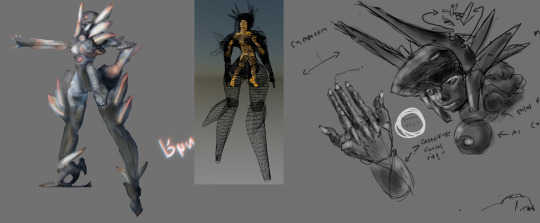

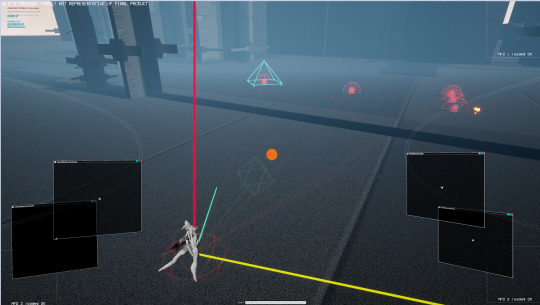
I also took up programming to build a game faster than ACFA, more airborne than Ace Combat, and more "art of the blade" than Zone of the Enders 2 by studying mecha games through the lens of published declassified military grade airwar and psywar human factors engineering and psychology concepts.
I want to make this game about mechposting and the trans experience, but I need your help: not money, but to speak with you about mecha.
The writing is simultaniously equal parts thesis to microfic a lot of the time, so your milage may vary.
Scroll through the mess below and find what suits you best.
Please.
Mecha Theory Writing
A comprehensive explanation of the evolutionary path from conventional ground and air vehicles, including a comprehensive outline of a functioning control-design based on the inceptor/software model seen in unmanned drones and 5th gen aircraft, complete with explanations.
The evolution of the walking thing called “mecha" (original)
Chapter 0: Establishing terminology & Concepts Part 1: Defining "the mechaness" of something: the 8 principles of mecha Part 2: Feisability: Mecha aren't realistic, but not for the reason you think
Chapter 1: How does "mecha" come into existence/why would you want one? Part 1: An evolution from ground vehicles of today Part 2: Skating, to walking, to running, to flight Part 3: “Why transform in the vacuum of space?”
Chapter 2: Cockpit & Software Design Control Theory Part 4: On Mecha Control Theory: Considerations Part 4a: On Mecha Control Theory II: OKAWARA Part 4b: On Mecha Control Theory III: TOMINO Part 4c: On Mecha Control Theory III: NAGANO
The World of Armored Core
An exploration of the world of Armored Core, using research into real phenomenon and engineering systems to infer how the world may itself function
Kojima particle physics (part 1): What are they? Kojima particle physics (part 2): The Human Consequences NEXT cockpit design (part 1): AMS and Lynx NEXT Cockpit Design (Part 2): G-force Tolerance Technocrat is SpaceX, and the legacy of Musk’s father (lmao) I am a 4th gen douchebag, and I love it (love-letter to ACFA) 4th gen shitpost: white gopnik
How To Domesticate Your Pilot
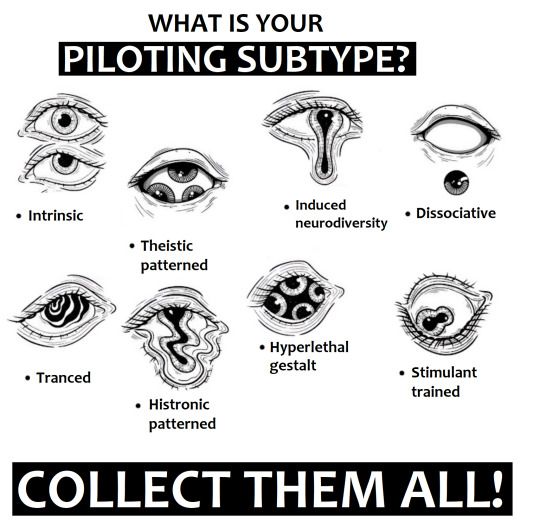
A husbandry guide for handlers, consisting of opinions and thoughts from various trainers and operators, as well as pilots. Includes practices, procedures, articles, stories and snippets.
I'm currently testing the waters with snippets and will likely be posting it out of order. I am extremely hungry for any and all possible feedback
If anybody knows the original source of the image of the eyes (which I first saw in a youtube ad) I'd love to know. I very much would like to commission them.
Inspired by mechposting
Chapter 3: Do not Abuse Your Wolves (Psychological patterning) Part 1: Action patterning (Initial Phases) Part 2: Action Patterning (Risks) Part 3: Once upon a mechanism
On mecha design: My personal thoughts on the assemblies of shape, form in the context of motion, action and function 1. Does anybody else have physical characteristics they find the most appealing? 2. Thoughts on self-altering dynamic form, and proportion designs 3. Shoji Kawamori and Armored Core: designers hallucinate, but do they hallucinate too? 4. Why is Gundam Gquuuuux called Gundam Gquuuuux?
Mechsploitation thoughts

#Mechposting
My personal thoughts on piloting culture, and mechanical design
1. The eroticism of the machine: Megastructures 2. Beyond pilebunker: The Grind-blade and the legacy of Overweapons 3. FLAT/Touchscreens are an act of hate: I will teach you love 4. You do not need to pick between a big hammer or daggers if you are a robot 5. O'Socks combat mix (tw: substance abuse) 6. Team dynamics, addiction, conflicts of interest and marketing 7. Commuication is hard, and mecha feet are cool 8. Morrigan Aensland is mecha and you cannot change my mind 9. re: Last Exile is not dieselpunk; its post-steampunk deleuzian dreams 10. Mecha PMC promotion is back, in pog form 11. Bodies, corporeal schema, and the body language of pilots 12. The blessing of the hounds; main system engaging combat mode 13. Exotic doctrine: Grappling & Booster-fu // torsion, aspect and control 14. Osaka, why do you always want to talk about ACFA? 15. You walk, so they can run
# Miscposting: Immacullate vibe-topia Pilot, for you: Love. Love. The sound of the ideal cockpit Left Hand/Right hand [gone]-- Mechposting vibes soundwall 🇸🇮🇨🇰🇧🇪🇦🇹🇸 🇹🇴 🇸🇪🇪🇰 🇦🇳🇩 🇩🇪🇸🇹🇷🇴🇾 🇹🇴: A #mechposting playlist [ongoing] Cicatrix: A writing playlist Sounds for violence: Mecha games vs FPS games
# Pilotcore: Dress & attire 1. Attire concept (includes #mechposting patch list) 2. Crew attire for things other than piloting a giant robot 3. Singleton over-jacket 4. Radios, straps and whips 5. Wearable keyboard for pilots 6. What color should a flight-suit be? (#AskOsaka from @siveine)
The Learning Tree
Reading this will help you grow as a person, or ask questions
"I experience depression as a failure of resource allocation systems" Adult social skills 101, because the world broke our ability to understand eachother Mental health: Things I wish I knew in my teens, my 20's or even my early 30's Sex-positivity, associations, critical thinking & deradicalization Crossing the hrt libido event horizon without libido heat-death by making biscuits Fool!: Your nostalgia isn't real: Your past has been stolen from you! Why Linux diehards are morons, and so is everybody else too On the ecology of slurs and the evolution of language Individualism can mean many things. The three fetishes of the human condition The real meaning of "you will not be an anime girl, you'll be your mom"
Nothing, but content for contented malcontents
Insightful, but stupid.
The collapse of the anime ecology's biodiversity Cycles of Nostalgia: Nobody is going to be nostalgic for Corporate Memphis Europe doesn't teach the Odyssey: Americentricism's fetishism is already its downfall Feeling used: The eternal disappointment of the Sawano Drop Lame? Bitch please: Clubbing deserves to go extinct every pmdd transmasc is that badass hot painting of satan crying The reviewer made a major error The Maid's Paradox Bread real
The horrors
Robo ComBAT: Cactus Jaque (original)
The Fear
Concerning plunges into the ne plus ultra culture of tomorrow
Humbert complex: When people prefer what they imagine to what's really there White Diamond, fascism, projection, ego, how Steven Universe botched its end. Sandwich names: the internet sucks now and smartphones are to blame! Gatekeeping is weird and knowledge-checks are arbitrary nonsense "The internet feels gross now", a trajectory of human events Providing feedback is also a skill and not everybody has it. AI isn't evil but it does embolden the worst people economics is just twitter brain for worth Do you?
My actual projects:
Art (I'm kind of private about my output and don't post often, sorry)
Pixelart: A very silly computer design that makes me smile idk
Games:
Project Force: 6dof aerodynamic high speed robot action [ongoing] Inspired by Armored Core For Answer, Freespace 2, Zone of the Enders 2 & Ace Combat 3, this game aims to merge their elements into a high speed mech sim.
e: yeesh this pinned post is getting kinda huge, I should break it into sub-pages or something so nobody can ever see any of it lol
110 notes
·
View notes
Text
Apropos nothing... Everyone always talking about quantum computing and quantum information as the big second-generation* quantum-tech applications. (Someday I will get into what I think about quantum computing.) But there's a whole world of quantum sensing out there that's way more successful, starting with atomic clocks, which are already an established second-gen quantum technology.
Here's a recent result in quantum sensing:
* First-generation quantum tech is things that rely on the quantum nature of materials. The whole semi-conductor industry, and lasers, are the primary examples. Second-generation quantum tech is technology that relies on quantum control: the active building and control of quantum systems. By far the earliest example, and the most commercially advanced, is quantum clocks. But there are other types of quantum sensors on the market (mainly quantum magnetometers).
#quantum sensing#quantum technology#there are a couple secondary articles on this that are way flashier than this one that are much easier to stumble across#but they all link back to this and I assume this is the most accurate
9 notes
·
View notes
Text
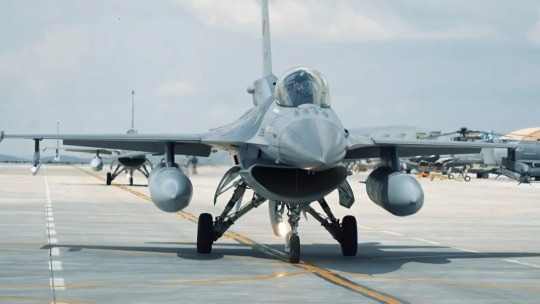
Turkish defense company tests high-tech EFSA radar that improves the country's combat aircraft
MURAD AESA radar of the Turkish ASELSAN completes inaugural flight with F-16 OZGUR warplane
Fernando Valduga By Fernando Valduga 03/28/2024 - 09:00 in Military
Turkey recently tested the nationally developed AESA radar, ASELSAN's MURAD, which recently conducted its first flight with an F-16 ÖZGÜR warplane.
“ASELSAN's AESA National Aircraft Nose Radar made its first flight with the F-16 ÖZGÜR platform. It will provide great capacity gains to our aircraft with simultaneous air-to-air and air-to-ground missions, detection/tracking of multiple targets, missile orientation beyond visual range, high-resolution ground images and electronic warfare functions,” the company confirmed in a social media post.

— ASELSAN (@aselsan) March 26, 2024
This demonstration provided data for additional testing and development of the radar system.
Future plans for MURAD include continuous testing and integration on various platforms, such as Bayraktar AKINCI TIHA, as well as other aerial platforms such as KIZILELMA, KAAN, HÜRJET, ANKA III, AKINCI and F-16.
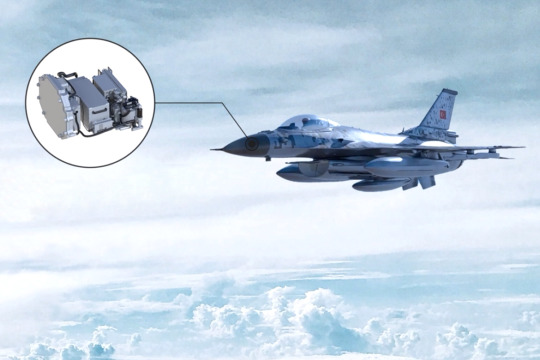
According to the President of the Presidential Defense Industry, Prof. Haluk GÖRGÜN, the integration of the AESA radar will align the F-16 ÖZGÜR with the standards of generation 4.5 aircraft. In addition, radar integration could improve the capabilities of other platforms such as KAAN and combat UAVs, providing them with additional functionality and low visibility features.
Aselsan CEO Ahmet Akyol highlighted the versatility of AESA technology, emphasizing its application in various domains, including air, land and sea.
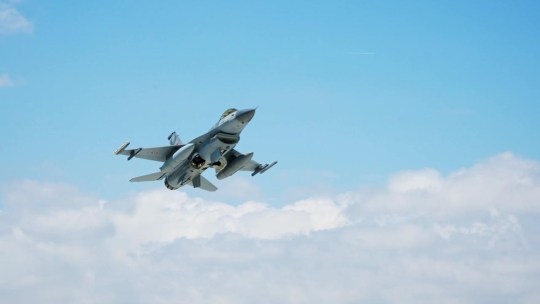
He noted that the internal development of Aselsan's EASA radar systems allows Turkey to maintain full control over technology and data, ensuring the highest level of security and capabilities.
The size of the global market for the combat aircraft equipped with AESA radar is estimated at $5 billion annually, with ongoing export negotiations positioning Aselsan radars as key actors in the global aerospace market.
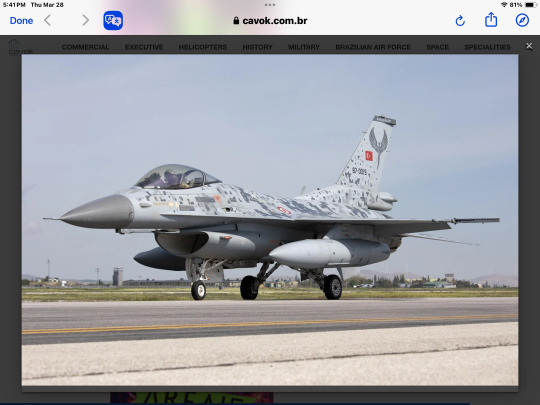
The ÖZGÜR Project aims to modernize F-16 Block 30 warplanes with domestic avionics and software, including the AESA National Radar. This initiative is expected to align the capabilities of the F-16 ÖZGÜR aircraft with those of the F-16 Block 70 fighters, ensuring uniformity and effectiveness throughout the fleet.
The main functions and capabilities of the EFSA National Radar include long-range search, multiple target tracking, detection and tracking of terrestrial targets, weather detection, automatic target detection and electronic attack.
Tags: ASELSANMilitary AviationF-16 Fighting FalconAESA radarsTAF - Turkish Air Force / Turkish Air Force
Sharing
tweet
Fernando Valduga
Fernando Valduga
Aviation photographer and pilot since 1992, he has participated in several events and air operations, such as Cruzex, AirVenture, Dayton Airshow and FIDAE. He has works published in specialized aviation magazines in Brazil and abroad. He uses Canon equipment during his photographic work in the world of aviation.
Related news
MILITARY
Australian subsidiary of Boeing will establish production site of MQ-28 'Ghost Bat' drones in Queensland
28/03/2024 - 07:57
HISTORY
30 years after its inaugural flight, the Eurofighter is more important than ever
27/03/2024 - 21:54
MILITARY
Japan eases military restrictions to allow export of future fighters
27/03/2024 - 19:36
BRAZILIAN AIR FORCE
VIDEO: Meet Captain Jeciane, the first woman to fly the KC-390 Millennium aircraft
27/03/2024 - 19:17
MILITARY
NATO allies strengthen cooperation in military aviation training in Europe
27/03/2024 - 16:00
HELICOPTERS
Delivery of the first U.S. Army's first CH-47F Block II production helicopter is near
27/03/2024 - 15:00
2 notes
·
View notes
Text
Events 11.17 (after 1950)
1950 – Lhamo Dondrub is officially named the 14th Dalai Lama. 1950 – United Nations Security Council Resolution 89 relating to the Palestine Question is adopted. 1953 – The remaining human inhabitants of the Blasket Islands, Kerry, Ireland, are evacuated to the mainland. 1957 – Vickers Viscount G-AOHP of British European Airways crashes at Ballerup after the failure of three engines on approach to Copenhagen Airport. The cause is a malfunction of the anti-icing system on the aircraft. There are no fatalities. 1962 – President John F. Kennedy dedicates Washington Dulles International Airport, serving the Washington, D.C., region. 1967 – Vietnam War: Acting on optimistic reports that he had been given on November 13, U.S. President Lyndon B. Johnson tells the nation that, while much remained to be done, "We are inflicting greater losses than we're taking…We are making progress." 1968 – British European Airways introduces the BAC One-Eleven into commercial service. 1968 – Viewers of the Raiders–Jets football game in the eastern United States are denied the opportunity to watch its exciting finish when NBC broadcasts Heidi instead, prompting changes to sports broadcasting in the U.S. 1969 – Cold War: Negotiators from the Soviet Union and the United States meet in Helsinki, Finland to begin SALT I negotiations aimed at limiting the number of strategic weapons on both sides. 1970 – Vietnam War: Lieutenant William Calley goes on trial for the My Lai Massacre. 1970 – Luna programme: The Soviet Union lands Lunokhod 1 on Mare Imbrium (Sea of Rains) on the Moon. This is the first roving remote-controlled robot to land on another world and is released by the orbiting Luna 17 spacecraft. 1973 – Watergate scandal: In Orlando, Florida, U.S. President Richard Nixon tells 400 Associated Press managing editors "I am not a crook." 1973 – The Athens Polytechnic uprising against the military regime ends in a bloodshed in the Greek capital. 1983 – The Zapatista Army of National Liberation is founded in Mexico. 1986 – The flight crew of Japan Airlines Flight 1628 are involved in a UFO sighting incident while flying over Alaska. 1989 – Cold War: Velvet Revolution begins: In Czechoslovakia, a student demonstration in Prague is quelled by riot police. This sparks an uprising aimed at overthrowing the communist government (it succeeds on December 29). 1990 – Fugendake, part of the Mount Unzen volcanic complex, Nagasaki Prefecture, Japan, becomes active again and erupts. 1993 – United States House of Representatives passes a resolution to establish the North American Free Trade Agreement. 1993 – In Nigeria, General Sani Abacha ousts the government of Ernest Shonekan in a military coup. 1997 – In Luxor, Egypt, 62 people are killed by six Islamic militants outside the Temple of Hatshepsut, known as Luxor massacre. 2000 – A catastrophic landslide in Log pod Mangartom, Slovenia, kills seven, and causes millions of SIT of damage. It is one of the worst catastrophes in Slovenia in the past 100 years. 2000 – Alberto Fujimori is removed from office as president of Peru. 2003 – Actor Arnold Schwarzenegger’s tenure as the governor of California began. 2012 – At least 50 schoolchildren are killed in an accident at a railway crossing near Manfalut, Egypt. 2013 – Fifty people are killed when Tatarstan Airlines Flight 363 crashes at Kazan Airport, Russia. 2013 – A rare late-season tornado outbreak strikes the Midwest. Illinois and Indiana are most affected with tornado reports as far north as lower Michigan. In all around six dozen tornadoes touch down in approximately an 11-hour time period, including seven EF3 and two EF4 tornadoes. 2019 – The first known case of COVID-19 is traced to a 55-year-old man who had visited a market in Wuhan, Hubei Province, China.
2 notes
·
View notes
Text
I was referencing the things put forth by OP, in order:
Huge wiring harnesses simplified: Cybertruck Guy and Radmad are both wrong, for different reasons.
Current industry standards don't have separate wires for each individual switch or control, either. They group several switches, lights, etc. that are nearby together, run them into a microcontroller, and put that controller on a vehicle bus. Currently that's usually a CAN (redundant, fault-tolerant) or LIN (neither, but much simpler) bus. This drastically simplifies wiring harnesses.
The main thing Tesla has done is change the DC voltage for that bus from 12 V to 48 V nominal. Since power is voltage times current, and wire thickness is dependent on current, this cuts about half the copper mass out of the power lines in the harness. The other (data) lines were already using smaller wires. The industry has been flirting with a 48V bus for around two decades by now; Tesla just went and did it and dealt with the engineering problems when they popped up. And this is a rare case where "they're a bunch of Silicon Valley nerds" may have helped: datacenters have been using 48V DC for in-rack power delivery for decades, so they had more familiarity with it than Detroit.
They've also adopted single-pair Ethernet (1000base-T1) for the high-speed entertainment data links. This technology has been in the industry since late 2016. It's usually integrated directly onto the custom ICs in ECUs. I remember another thread like this with a tweet where someone was complaining about the fragility of RJ-45 plugs and how that's disqualifying for a vehicle, and he's right, but single-pair Ethernet does not use those jacks; it's integrated into wiring harnesses with everything else.
Astronauts laded on the moon with altitude markers hand etched on the window: That was a backup system dramatized by the Apollo 13 movie. They had an inertial navigation system, like aircraft do, as their primary navigation.
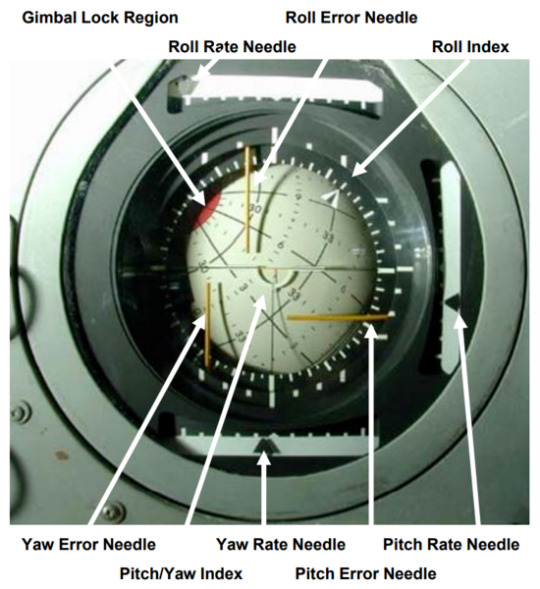
Oh, and it's attitude, not altitude. Very different concepts that folks should not mix up.
Can't get a rocket off the pad without blowing up: Neither could NASA their first few years. Meanwhile SpaceX had 98 successful orbital flights last year, and they can reuse their boosters (the record is 18 times). But that's way off topic.
Tesla Model Y broke: It's not news when non-Teslas lose power steering, apparently. And I've had cars that took many more than three appointments to fix. We can throw around anecdata all day.
Series wiring like Christmas lights: Come on, you've got no basis for that.
It's like the Titan sub: Sigh. Really?
Okay, now to the RDN link:
the vehicle’s angular design and stainless steel body could pose danger to other road users
Absolutely true. Also true of almost every luxury pickup truck on the market. One example:

I'm all for figuring out some kind of regulatory regime to rein this in. Or maybe a modification of liability rules and increased insurance coverage minimums.
“The big problem there is if they really make the skin of the vehicle very stiff by using thick stainless steel, then when people hit their heads on it, it’s going to cause more damage to them,”
True, but it's not that thick or stiff; the speaker was speculating. Other have pointed out that "we shot it with a Tommy gun" is a lousy test because the bullets are rather low velocity. If you watch the side impact crash test, you can see the side panels visibly flexing.
And right after that, an IIHS rep said, “IIHS hasn’t evaluated the Cybertruck. The discussions we’ve seen so far appear to be based on speculation. I would add that our experience with Tesla is that they aim for the highest safety ratings in IIHS tests. We have no reason to expect anything different with the Cybertruck.”
The biggest problem with Teslas, from insurance companies' perspectives, has been that airbag-deployed collisions tend to result in totaling the vehicle more often than in other cars. Occupant safety, on the other hand, seems to be better than average. We've seen people walk away from their Model 3s after they got T-boned by speeding pickups (60-ish MPH in a 30 zone). We know this from accident reconstruction and camera data.
There's a linked video in the article comparing the Tesla Cybertruck collision to a Dodge Ram 1500. There are several others like it on YouTube (I saw one that had six trucks in it, all synced up). They all have the same flaw: they're comparing different crash types. The Cybertruck is doing a full frontal crash, where you drive the vehicle into a solid, immovable wall, while the others are moderate overlap crashes, where the hood goes over the obstacle and only the left 1/3 of the vehicle is obstructed, so the engine can deflect to the sides instead of going into the firewall and then the passenger compartment. The Cybertruck, of course, does not have a large engine in that space; it's mostly cargo storage. And we can clearly see it crumpling and the front wheel moving outward instead of back into the passenger compartment, like practically all cars do now.
(Some folks like to point out how the rear wheel breaks away, too: this is expected because it's a steering wheel, since the Cybertruck has four-wheel steering, and uses the same suspension technology as the front, instead of connecting the rear wheels more directly to the rear axle like most vehicles. Not completely directly, though, like the Chevy Corvair's swing axles. In any case, kinetic energy breaking the rear wheels off like that is energy that isn't compromising the cabin.)
The article addresses the "lack" of crumple zones:
Samer Hamdar, a George Washington University auto safety professor, told Reuters that while a lack of crumple zones concerned him, there could be other factors that accounted for it. “There might be a possibility of shock-absorbent mechanism that will limit the fact that you have a limited crumple zone,” Hamdar said.
I'm not going to speculate about crumple zones beyond the above ("the cargo area collapses, taking some energy with it; we have to see if that's enough to call a crumple zone, but it's not nothing") until someone tears one down and documents it. But crumple zones aren't the only means of keeping kinetic energy out of the passengers.
The rest of the article goes back to concerns about pedestrian safety, which seem to be the main substantive concern, and is noted at the end of this video:
youtube
And again, pedestrian safety is an industry-wide problem. We need another Ralph Nader, but demonizing Tesla alone (god it's so easy, Elon is such an asshole) only gives cover to the rest of the industry. And none of the tweets in OP's post spoke of this.




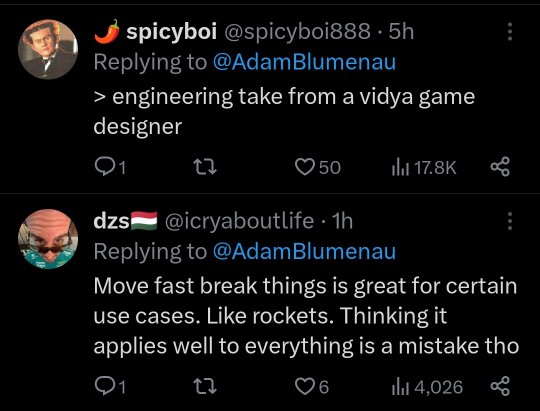



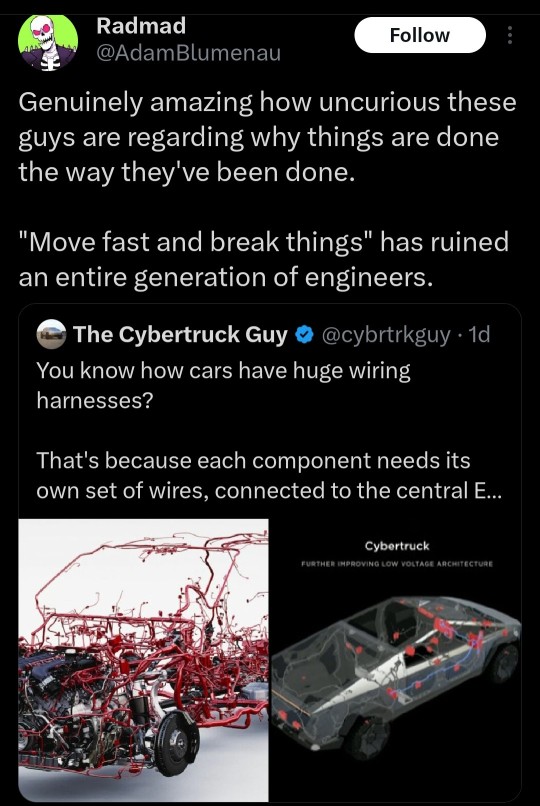
42K notes
·
View notes
Text
Aircraft Flight Control Systems Market Forecast: Growth Trends and Opportunities (2024-2030)

The Aircraft Flight Control Systems Market has undergone significant transformations over the years, driven by technological advancements and the demand for enhanced safety, efficiency, and automation. Among these technological evolutions, artificial intelligence (AI) has emerged as a game-changer, redefining how modern aircraft operate. AI integration into flight control systems is revolutionizing aircraft navigation, reducing pilot workload, and improving overall safety. As AI continues to advance, its role in the Aircraft Flight Control Systems Market will become even more prominent.
AI and the Evolution of Flight Control Systems
Traditional aircraft flight control systems relied on mechanical linkages and hydraulic actuators. The advent of fly-by-wire (FBW) technology replaced these conventional controls with electronic interfaces, significantly improving aircraft performance. Today, AI is taking flight control technology a step further by introducing predictive analytics, machine learning algorithms, and automation. AI-powered systems can analyze vast amounts of data in real time, making intelligent decisions to optimize aircraft operations and enhance safety.
AI in Fly-By-Wire Technology
Fly-by-wire (FBW) systems have transformed aircraft flight control by eliminating the need for heavy mechanical components. AI enhances these systems by enabling:
Adaptive control algorithms that adjust to changing flight conditions
Predictive maintenance to prevent component failures
Automated responses to emergency situations
As AI-powered flight control systems become more sophisticated, they enhance situational awareness and improve decision-making capabilities for pilots, contributing to the growth of the Aircraft Flight Control Systems Market.
Download Pdf Brochure: https://www.marketsandmarkets.com/pdfdownloadNew.asp?id=117067292
The Role of AI in Enhancing Safety
Safety is a critical concern in aviation, and AI is playing a vital role in making air travel safer. AI-driven flight control systems can process data from multiple sensors and provide real-time insights to pilots. These systems are capable of:
Identifying potential hazards and suggesting corrective actions
Reducing human error by automating complex decision-making tasks
Enhancing autopilot functions for smoother and more efficient flight operations
The integration of AI-driven safety mechanisms is a key factor driving the expansion of the Aircraft Flight Control Systems Market.
AI and Autonomous Flight Control
The future of aviation is moving towards autonomous flight control, and AI is at the heart of this transformation. AI-driven systems can manage flight operations with minimal human intervention, paving the way for fully autonomous aircraft. AI enables:
Real-time route optimization based on weather and traffic conditions
Autonomous landing and takeoff capabilities
AI-assisted air traffic management for seamless coordination with ground control
With these advancements, AI is reshaping the future of the Aircraft Flight Control Systems Market, making air travel more efficient and reliable.
Ask For Sample Report: https://www.marketsandmarkets.com/requestsampleNew.asp?id=117067292
Challenges of AI Integration in Flight Control Systems
Despite its numerous advantages, integrating AI into flight control systems presents several challenges:
Regulatory Compliance: Stringent aviation regulations require AI-powered flight control systems to meet rigorous safety standards.
Cybersecurity Risks: AI-driven flight control systems are vulnerable to cyber threats, necessitating robust security measures.
Certification Complexities: AI algorithms must undergo extensive testing and validation before receiving approval from aviation authorities.
Addressing these challenges is crucial for the continued growth and adoption of AI in the Aircraft Flight Control Systems Market.
AI's Impact on Market Growth
The Aircraft Flight Control Systems Market is experiencing significant growth, driven by AI advancements. According to industry estimates, the market is expected to grow from USD 14.5 billion in 2022 to USD 21.5 billion by 2027, with a CAGR of 8.2%. The increasing demand for AI-powered flight control systems is contributing to this expansion. Factors influencing market growth include:
Rising adoption of AI-driven automation in aviation
Growing demand for fuel-efficient and lightweight aircraft
Increasing investments in AI research and development
AI is playing a pivotal role in shaping the future of the Aircraft Flight Control Systems Market, making flight operations safer, more efficient, and cost-effective.
AI is transforming the Aircraft Flight Control Systems Market by enhancing safety, efficiency, and automation. As AI technology continues to evolve, its applications in flight control systems will expand, paving the way for a new era of intelligent aviation. While challenges remain, the benefits of AI integration far outweigh the hurdles, making it a crucial component of future aircraft flight control systems.
#aircraft flight control systems market#ai in flight control systems#fly-by-wire technology#autonomous flight control#ai in aviation safety#future of aircraft flight control systems
0 notes
Text
Commercial and Defense Aviation Sectors Propel Actuator System Market

The global aviation actuator system market is poised for substantial growth, projected to expand from US$ 1.7 Bn in 2022 to US$ 3.1 Bn by 2031, at a compound annual growth rate (CAGR) of 6.8% from 2023 to 2031. Actuator systems are critical in controlling various functions of aircraft, from flight control surfaces and landing gear to thrust reversers and utility systems. With increasing demand for air travel, the need for advanced, reliable, and fuel-efficient actuator systems has become more pronounced across commercial and defense aviation sectors.
Market Drivers & Trends
1. Rising Air Transportation Services Globalization, urbanization, and growing tourism and trade activities have significantly increased demand for air travel. This, in turn, is driving the demand for modern and efficient aircraft equipped with advanced actuator systems. As airlines expand their fleets, there is a heightened need for scalable and easily maintainable systems.
2. Surge in Aviation Industry Investments The aviation sector is undergoing a technological transformation with increased R&D investments aimed at developing lightweight, efficient, and eco-friendly aircraft components. The shift toward electric and hybrid propulsion systems has also necessitated the development of new actuator technologies that enhance performance while meeting sustainability goals.
Latest Market Trends
Electric and Hybrid Aircraft Propulsion: Electric and hybrid aircraft require precise actuation for safety and performance, spurring the need for next-generation actuator systems.
Use of Lightweight Materials: To reduce weight and improve fuel efficiency, manufacturers are adopting composite materials and advanced alloys in actuator system design.
Adoption of Electromechanical Actuators (EMAs): EMAs are gaining popularity due to their improved control, reduced maintenance needs, and compatibility with electric aircraft platforms.
Key Players and Industry Leaders
Prominent companies dominating the aviation actuator system landscape include:
Moog Inc.
Honeywell International Inc.
Collins Aerospace
General Electric
Safran
PARKER HANNIFIN CORP
Aero Space Controls Corporation
ITT INC.
Woodward Inc.
Microsemi
SAM GmbH
Crissair, Inc.
These companies focus on continuous innovation, strategic partnerships, and expanding their product portfolios to maintain a competitive edge in the global market.
Access important conclusions and data points from our Report in this sample - https://www.transparencymarketresearch.com/sample/sample.php?flag=S&rep_id=51987
Recent Developments
Moog Inc. (October 2022): Successfully supported the Gremlins air recovery mission with advanced precision motion control, including the airborne recovery of an X-61A Gremlins Air Vehicle.
Hanwha Aerospace (August 2022): Partnered with Vertical Aerospace to develop Electromechanical Actuators for VX4 eVTOL aircraft, reinforcing the shift toward electric aviation technologies.
Market Opportunities
Sustainability Initiatives: Increasing emphasis on reducing carbon emissions opens avenues for electric actuator systems.
Integration of AI and IoT: Smart actuators with embedded diagnostics and predictive maintenance capabilities can enhance system performance and safety.
Defense Sector Growth: Rising defense budgets and modernization of military aircraft present significant opportunities for actuator system providers.
Future Outlook
The aviation actuator system market will continue to grow steadily, driven by increased fleet sizes, demand for fuel-efficient aircraft, and evolving regulatory frameworks supporting green aviation. Continued R&D investment, especially in electric and smart actuators, is likely to shape the future of aviation motion control systems.
Market Segmentation
By Actuator Type
Mechanical Actuator
Hydraulic Actuator
Electric Actuator
Others (Piezoelectric, Pneumatic, Electro hydrostatic)
By Application
Flight Control
Auxiliary Control
Utility Actuation
Others (Weapons Bay Door Drive)
By End-use
Commercial Aviation
Defense
Regional Insights
Asia Pacific emerges as the leading region, accounting for the largest share in 2022. Factors driving regional growth include:
Rising air traffic and commercial aircraft demand
Supportive government policies for aerospace manufacturing
Strategic initiatives such as India’s "Make in India" program
Notable Development: In February 2024, the Airbus Defence and Space Quality Management System for the C295 aircraft was approved by India’s DGAQA for production in India, marking a significant step in domestic aerospace capabilities.
Other key regions include:
North America: Strong defense aviation market and innovation leadership
Europe: Regulatory focus on emissions and technological innovation
Middle East & Africa & South America: Emerging markets with growing demand for air connectivity
Frequently Asked Questions
1. What is the market size of the aviation actuator system market in 2022? The market was valued at US$ 1.7 Bn in 2022.
2. What is the projected market value by 2031? The market is expected to reach US$ 3.1 Bn by 2031.
3. What is driving the aviation actuator system market growth? Growth is driven by the increase in air transportation, technological advancements, and surge in aviation investments.
4. Which region leads the global market? Asia Pacific dominated the global aviation actuator system market in 2022.
5. Who are the key players in the industry? Leading companies include Moog Inc., Honeywell, GE, Safran, Collins Aerospace, and PARKER HANNIFIN CORP, among others.
6. What are the emerging trends in the market? Trends include adoption of electric propulsion, use of EMAs, and integration of smart technologies in actuator systems.
7. What opportunities exist in the market? Opportunities lie in sustainable aviation, AI-driven actuator systems, and military aircraft modernization.
8. What are the major applications of aviation actuator systems? They are used in flight control, auxiliary systems, landing gear, and utility actuation.
Explore Latest Research Reports by Transparency Market Research: Image Sensor Market: https://www.transparencymarketresearch.com/image-sensors-market.html
Antenna-in-Package Technology Market: https://www.transparencymarketresearch.com/antenna-in-package-technology-market.html
Light Control Switches Market: https://www.transparencymarketresearch.com/light-control-switches-market.html
Level Transmitter Market: https://www.transparencymarketresearch.com/level-transmitter-market.html
About Transparency Market Research Transparency Market Research, a global market research company registered at Wilmington, Delaware, United States, provides custom research and consulting services. Our exclusive blend of quantitative forecasting and trends analysis provides forward-looking insights for thousands of decision makers. Our experienced team of Analysts, Researchers, and Consultants use proprietary data sources and various tools & techniques to gather and analyses information. Our data repository is continuously updated and revised by a team of research experts, so that it always reflects the latest trends and information. With a broad research and analysis capability, Transparency Market Research employs rigorous primary and secondary research techniques in developing distinctive data sets and research material for business reports. Contact: Transparency Market Research Inc. CORPORATE HEADQUARTER DOWNTOWN, 1000 N. West Street, Suite 1200, Wilmington, Delaware 19801 USA Tel: +1-518-618-1030 USA - Canada Toll Free: 866-552-3453 Website: https://www.transparencymarketresearch.com Email: [email protected]
0 notes
Text
How Kanika Tekriwal JetSetGo Changed Air Travel in India

Air travel in India has always been an evolving industry. But until recently, private aviation remained largely untouched by innovation—limited to the elite, with outdated booking systems and little transparency. That was before Kanika Tekriwal JetSetGo arrived on the scene. Today, JetSetGo Aviation stands at the forefront of a private aviation revolution in India, powered by vision, tech, and sheer grit.
Founded by Kanika Tekriwal, a pioneering entrepreneur with a bold dream, JetSetGo Aviation Services is transforming how Indians experience the skies. From streamlining charter bookings to introducing a customer-first flying culture, JetSetGo has broken down traditional barriers and opened new horizons in air travel.
Meet the Trailblazer: Kanika Tekriwal
Before we dive into JetSetGo’s impact, we need to understand the driving force behind it—Kanika Tekriwal. A cancer survivor turned aviation entrepreneur, Kanika is a symbol of courage, vision, and determination. She launched JetSetGo with a singular mission: to make private jet travel accessible, transparent, and efficient in India.
While others saw private aviation as a niche for the ultra-wealthy, Kanika Tekriwal JetSetGo saw a growing market that craved smarter travel. Her fresh approach and unwavering determination turned a dream into India’s leading aviation service provider.
The Traditional Challenges of Private Aviation in India
Before JetSetGo took off, India's private aviation space was:
Highly fragmented
Controlled by brokers with opaque pricing
Lacking digital booking infrastructure
Inefficient in terms of aircraft utilization
Out of reach for most customers
This created a rigid and expensive system, where chartering a jet involved endless calls, negotiations, and confusion. There was a dire need for transparency, innovation, and modernization—and JetSetGo delivered exactly that.
How JetSetGo Changed the Game
1. Democratizing Private Flying
One of JetSetGo’s biggest achievements is making private flying more accessible. Through competitive pricing, smart fleet management, and a digital-first booking system, the company opened doors to entrepreneurs, small business owners, families, and travelers who never considered private jets before.
JetSetGo’s innovative model helps reduce empty-leg flights (where jets return empty after dropping off passengers), thereby lowering costs and increasing availability for new clients.
2. Technology-Driven Platform
JetSetGo Aviation introduced a first-of-its-kind online platform for real-time jet bookings. Customers can:
View available aircraft
Compare prices
Customize their itinerary
Choose amenities
Book flights instantly
This level of digital convenience was unheard of in Indian private aviation before Kanika Tekriwal JetSetGo.
3. Transparent Pricing
JetSetGo eliminated the age-old issue of vague charter pricing. Whether you're a first-time flyer or a frequent traveler, JetSetGo Aviation Service ensures full cost clarity from booking to boarding. This transparency builds trust and encourages repeat customers.
4. Customization and Experience
Every flight with JetSetGo is tailored. From gourmet meals to in-flight entertainment and ground transport, JetSetGo offers bespoke flying experiences. It’s not just about the destination—it’s about enjoying the journey.
JetSetGo Aviation Services: Key Offerings
Kanika Tekriwal JetSetGo Aviation Services includes a wide range of air travel solutions designed for luxury, utility, and efficiency:
Private Jet Charters: For business or leisure, JetSetGo offers jets across categories—from light jets to long-range aircraft.
Helicopter Charters: Ideal for city transfers, regional access, or even wedding arrivals.
Group Charters: Corporates and events can charter multiple seats or entire aircraft.
Air Ambulance: Life-saving emergency evacuations with on-board medical facilities.
Aircraft Management: Full-service aircraft operations for private owners, maximizing asset usage and reducing idle time.
Impact on Indian Air Travel Industry
1. Shaping a New Market
JetSetGo created a previously untapped segment of aspirational flyers—those who wanted to fly private but lacked access. This new market is now a thriving customer base for the brand.
2. Boosting Regional Connectivity
JetSetGo's smaller jets and helicopters allow it to access non-metro airports and underserved regions. This opens travel options for businesses and tourists looking beyond traditional city circuits.
3. Promoting Business Efficiency
For India Inc., JetSetGo offers time-saving and productivity-enhancing travel. Executives can conduct meetings mid-air, attend multiple city events in a day, or travel discreetly—advantages that commercial airlines can’t offer.
4. Supporting Medical & Emergency Needs
JetSetGo’s air ambulance service has been a lifeline, especially during the COVID-19 crisis. Quick evacuations, medical equipment, and trained personnel made it a go-to solution for critical care transport.
Kanika Tekriwal’s Influence Beyond Aviation
Kanika Tekriwal JetSetGo is more than a business name—it’s a symbol of resilience and innovation. Kanika is now a global inspiration:
Forbes 30 Under 30 Asia
BBC’s 100 Most Influential Women
Economic Times' Emerging Entrepreneur Award
Fortune’s Most Powerful Women in Business
She’s also an advocate for women in leadership, green aviation, and entrepreneurial education.
JetSetGo’s Role in Post-Pandemic Travel
COVID-19 drastically altered the travel landscape. Health, hygiene, and isolation became top concerns—and JetSetGo Aviation Services was perfectly positioned to meet those needs.
While commercial airlines faced shutdowns and delays, JetSetGo saw a surge in private flying demand. Business continuity, medical emergencies, and safe vacations became reasons to turn to JetSetGo Aviation.
Green Skies Ahead: Sustainability in Focus
Kanika Tekriwal JetSetGo is now exploring sustainable aviation fuel (SAF), electric air taxis, and carbon offset programs. As India moves toward greener practices, JetSetGo is committed to flying responsibly.
Their future vision includes:
Electrifying short-haul travel
Introducing AI-powered flight routing
Building private terminals with net-zero energy design
Real Stories: Changing Lives Mid-Air
The real impact of JetSetGo is reflected in its stories:
A wedding charter that reunited a family across cities
A last-minute medical evacuation that saved a life
A business deal sealed mid-flight
A bride arriving in a helicopter at her destination wedding
These stories give life to the Kanika Tekriwal JetSetGo narrative. It’s not just about flying—it’s about connecting lives, dreams, and moments.
Looking Ahead: What’s Next for JetSetGo?
The company continues to evolve and scale. Here's what's on the radar:
Expanding to Tier-2 & Tier-3 cities
Integrating global charter partnerships
Launching a JetSetGo loyalty program
Entering the Middle East and Southeast Asian markets
With Kanika Tekriwal at the helm, JetSetGo Aviation Service is primed for international dominance while staying true to its Indian roots.
Conclusion: Changing the Way India Flies
How Kanika Tekriwal JetSetGo Changed Air Travel in India isn’t just a story of business success. It’s a testament to what vision, resilience, and innovation can achieve. Kanika took a traditional, slow-moving industry and turned it into a smart, stylish, and customer-centric experience.
Thanks to JetSetGo, private flying in India is no longer just about luxury—it’s about efficiency, safety, flexibility, and joy. As JetSetGo continues to soar, it reminds us that the future of air travel isn’t just commercial—it’s personal, powerful, and ready for takeoff.
#jetsetgo#jetsetgo aviation#jetsetgo aviation service#kanika tekriwal jetsetgo#kanika tekriwal jetsetgo aviation#kanika tekriwal jetsetgo aviation service
0 notes
Text
Aircraft Lighting Systems Market Projected to Grow Amid Airline Modernization and Interior Lighting Advancements
The Aircraft Lighting Systems Market has emerged as a vital component of the global aerospace industry, driven by the need for enhanced safety, efficiency, and passenger comfort. Aircraft lighting systems include exterior and interior lights designed to support flight operations, ensure safety, and improve the in-cabin experience. As the aviation sector continues to grow, fueled by increased air travel demand and rapid technological advancement, the market for advanced aircraft lighting systems is witnessing substantial expansion.

Market Overview
Aircraft lighting systems encompass a range of solutions, including landing lights, navigation lights, anti-collision lights, cabin lights, emergency lights, and cockpit lights. These systems are essential for operations during low visibility, nighttime navigation, and emergencies. The shift towards LED-based lighting, which offers energy efficiency, durability, and reduced maintenance costs, has significantly influenced the market dynamics.
The market is broadly segmented by type (interior and exterior), technology (LED, fluorescent, incandescent), aircraft type (commercial, military, business jets), and end-use (OEM and aftermarket). Among these, LED technology dominates the segment due to its longevity and performance advantages.
Growth Drivers
Rising Air Passenger Traffic Increasing global air travel, especially in emerging markets such as Asia-Pacific and the Middle East, is driving new aircraft production and fleet expansion. Airlines are seeking modern and fuel-efficient aircraft equipped with advanced lighting systems, boosting market demand.
Technological Advancements The development of intelligent lighting systems that adjust according to ambient conditions, aircraft mode, or passenger needs is reshaping cabin interiors. Innovations like mood lighting, touchscreen controls, and dynamic LED patterns are becoming standard, especially in premium cabin classes.
Stringent Safety Regulations Aviation regulatory bodies, such as the FAA and EASA, enforce strict norms related to aircraft safety and operational visibility. This necessitates constant upgrades and compliance-driven investments in lighting systems, especially for commercial and military fleets.
Increased Demand for Customization and Aesthetics Airlines are increasingly investing in enhancing passenger experience by adopting customizable lighting solutions. These systems can simulate sunrise or sunset, reduce jet lag, and create a visually pleasant cabin ambiance that aligns with the brand identity.
Regional Insights
The North American market holds a significant share due to the presence of major aircraft manufacturers like Boeing and key lighting system providers. Moreover, the U.S. government’s investments in defense aviation contribute to high military aircraft lighting requirements.
The Asia-Pacific region is expected to witness the fastest growth, attributed to the increasing number of airline operators, booming travel industry, and rising aircraft deliveries in countries like China, India, and Japan. Government-supported aviation infrastructure developments further enhance the market potential in this region.
Europe remains a key player, with countries like Germany, France, and the UK driving innovation through R&D investments and home to industry leaders like Airbus.
Competitive Landscape
The aircraft lighting systems market is highly competitive, with several established and emerging players contributing to innovation and market expansion. Key players include:
Honeywell International Inc.
Cobham PLC
Diehl Stiftung & Co. KG
Collins Aerospace
Astronics Corporation
These companies focus on R&D, strategic partnerships, and product innovations to strengthen their global footprint. Mergers and acquisitions are also common as companies aim to diversify portfolios and enhance technological capabilities.
Challenges
Despite robust growth, the industry faces challenges including:
High Cost of Installation and Maintenance: Advanced lighting solutions can be costly, especially for small carriers or budget airlines.
Supply Chain Disruptions: Global issues such as semiconductor shortages or geopolitical tensions can impact the supply of critical lighting components.
Stringent Certification Processes: Aircraft components undergo rigorous approval processes, which can delay time-to-market for new lighting technologies.
Future Outlook
The future of the aircraft lighting systems market lies in the integration of smart and connected technologies. Features like IoT-enabled maintenance, AI-powered adaptive lighting, and integration with in-flight entertainment and climate control systems are poised to redefine the landscape. As sustainability becomes a core focus, the push for lightweight, energy-efficient solutions will continue to shape product development.
In conclusion, the aircraft lighting systems market is on a trajectory of steady growth, driven by modernization trends, technological advancements, and an expanding global aviation fleet. As airlines prioritize passenger experience and operational efficiency, demand for intelligent and customizable lighting solutions will remain strong in the years to come.
#AircraftLighting#AviationTechnology#AerospaceInnovation#LEDLighting#SmartCabinSolutions#AircraftInteriors
0 notes
Text
The Sky Wars: How EasyJet Battles Giants in Europe's Aviation Arena
In the skies, where a single mistake can strand an entire operation, EasyJet has emerged as a compelling case study in strategic adaptability and resilience. This London-based British low-cost airline operates to 30 countries and has made flying accessible for Europeans in millions. But under those orange planes is a complex series of strategic decisions that propel survival in one of the world's most cutthroat industries.
Weathering Political Storms and Economic Turbulence
Brexit struck EasyJet like surprise turbulence at 30,000 feet. As a British firm heavily reliant on European routes, leaving the EU posed an instant risk of extinction. The airline stood to lose access to lucrative intra-European routes that constituted the core of their business model. This political turmoil led management to contemplate radical alternatives, such as relocating headquarters or restructuring ownership to ensure EU compliance.
But each storm cloud has a silver lining. While uncertainty was ushered in through Brexit, declining fuel prices and interest rates in the UK brought relief. These economic tailwinds enabled EasyJet to sustain passenger growth even as profit fell, demonstrating how external factors test and enable business operations at the same time.
Social disruptions, like the French air traffic controller strike, made EasyJet realize that global operations entail working with various political and cultural surroundings. Such events, though unexpected, underscore the necessity of creating strong operating plans to withstand external shocks.
Digital Wings: Technology as a Game Changer
The digital revolution changed EasyJet's operational DNA. Those days of winding queues at airport counters are over. Cashless payments and online booking systems revolutionized customer experience while slashing operational costs by a large margin. This technological revolution perfectly complemented EasyJet's primary strategy of keeping costs low through operational efficiency.
However, being legally compliant is always challenging. Aviation law is stringent, and any breach incurs heavy financial losses and reputational costs. Environmental factors, particularly adverse weather, disproportionately impact low-cost carriers due to their thinner profit margins compared to legacy airlines.
Internal Strengths: Creating Competitive Moats
EasyJet's internal organization is both a testament to remarkable strengths and unnerving weaknesses. Its low-fare model is a magnet for market share, with high brand recognition across Europe generating credibility and customer confidence. Twenty years of history have provided EasyJet with precious relationships and operating experience that cannot easily be mimicked by new entrants.
But their minimalist approach leaves them with gaps in services. While others offer complimentary meals and more services, EasyJet's minimalist approach may discourage tourists who seek more complete holidays. Their heavy dependence on flights and travel within Europe exposes them most to political turmoil such as Brexit.
Reputation and human capital are the company's most precious assets. Qualified flight staff are in short supply, and the reputation of EasyJet provides access to capital and investment markets that new market entrants do not have.
Navigating Competitive Crosswinds
Porter's Five Forces analysis shows the complex competitive dynamics EasyJet operates on a daily basis. Customers have vast power with them, constantly comparing prices and services offered by several airlines. This customer mobility compels ongoing innovation with cost discipline.
Supplier relationships are particularly difficult. Producers of aircraft like Airbus have focused on markets and have enormous bargaining power. Multi-billion-pound contracts bind airlines into long-term agreements that are expensive and difficult to modify.
New entry threats remain containable owing to massive capital needs and regulatory hurdles. But innovations such as Hyperloop systems have the potential to disrupt local travel markets in the next decade.
Industry competition remains intense, with each competitor vying to pursue different strategies. Ryanair competes on ultra-low prices, while British Airways competes on several segments simultaneously.
Directional Choice: Strategic Flight Path
EasyJet's strategic options fall within Porter's generic strategies model. Its current cost leadership approach is based on operational effectiveness and economies of scale. Successful as it has been, this one is its weakness in changing market conditions.
Diversified differentiation strategies are promising. Enhanced reservation systems, upscale service levels, or custom-tailored customer experiences could command premium prices without weakening market appeal.
Bowman's Strategic Clock suggests that hybrid positioning may maximize EasyJet's market position. Combining acceptable prices with discriminatory service differentiation may expand their clientele base while improving profitability.
Conclusion
EasyJet's strategic odyssey demonstrates how leading businesses maneuver challenging, changing environments with adaptive strategy. Brexit tested their core business model, but the company proved highly resilient by riding technological progress and operational excellence. Their journey proves that sustainable competitive advantage calls for ongoing strategic adaptation instead of dogmatic adherence to individual strategies. As European aviation keeps changing, EasyJet's capacity to balance cost leadership with selective differentiation will define their future success in progressively competitive skies. If you would like to delve further, go to desklib's website and delve deeper into this topic using our AI researcher tool.
0 notes